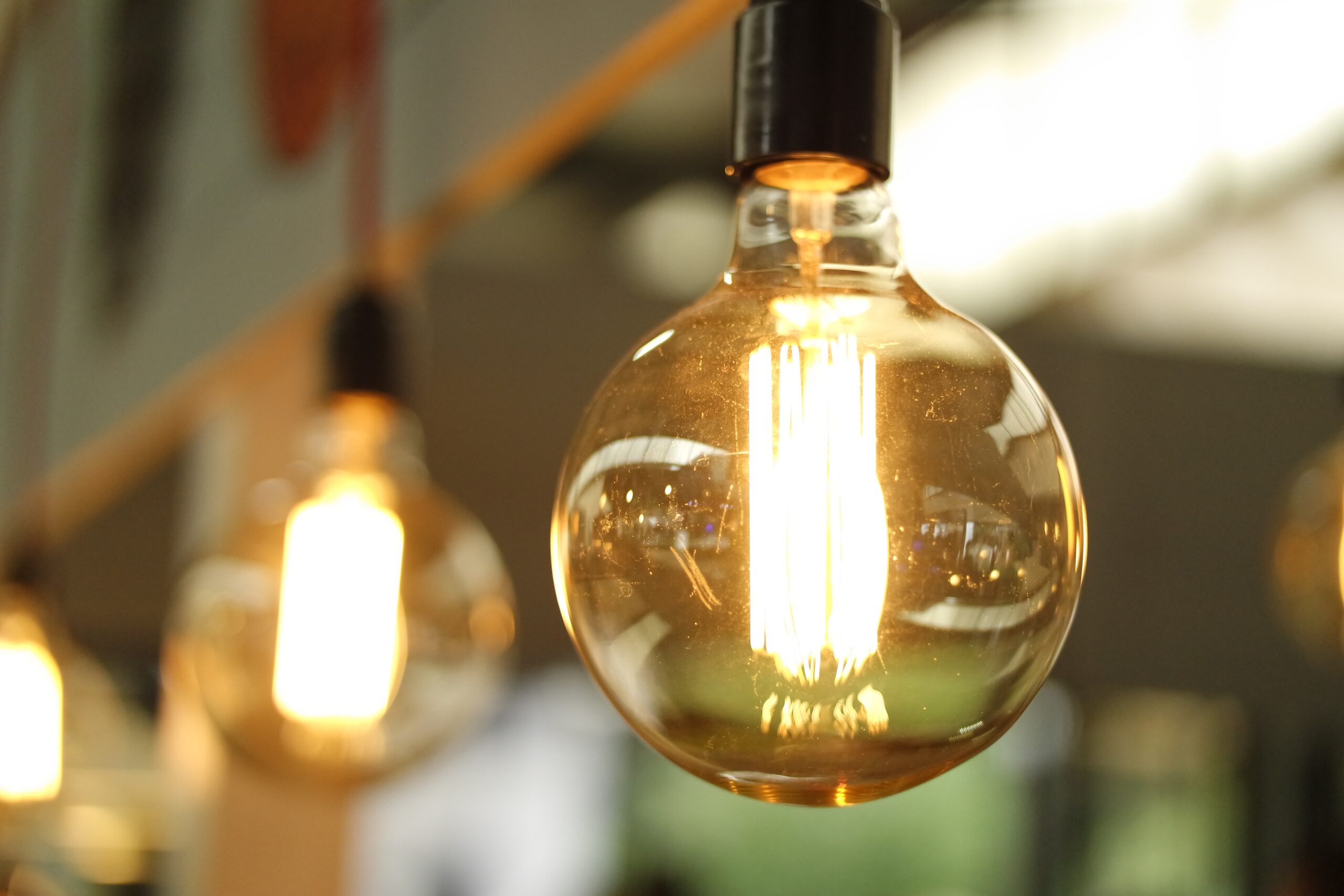
Understanding LED lighting
Lighting accounts for approximately 15% of a typical UK home’s electricity bill. Switching to energy-efficient lighting, such as Light Emitting Diodes (LEDs), can significantly reduce this consumption, leading to lower energy bills and a reduced carbon footprint.
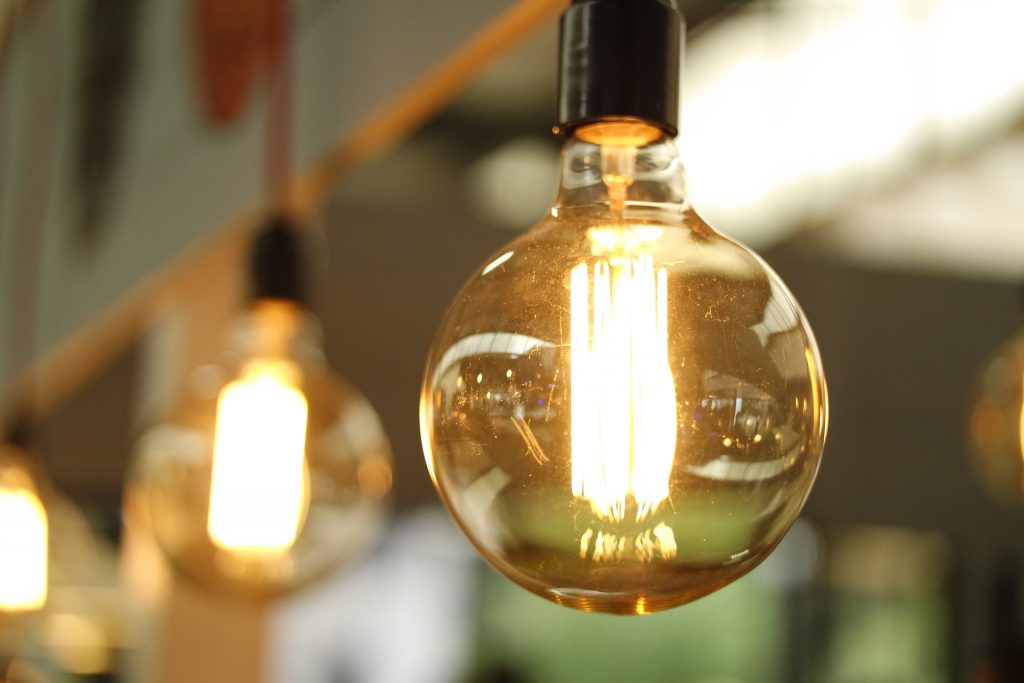
What are LED light bulbs?
Traditional incandescent bulbs are highly inefficient, converting only about 5% of the electricity they use into visible light, with the remainder wasted as heat. Halogen bulbs, while slightly more efficient, still rely on similar filament technology and are commonly found in spotlight fittings.
In contrast, LEDs allow electricity to flow through them in one direction to produce a small amount of light. Bulbs for domestic use contain a large number of LEDs so that a bright enough light is emitted. They are significantly more efficient than traditional or halogen lightbulbs – and LED replacements are available for most light fittings, as well as being very cheap.
How do LED light bulbs work?
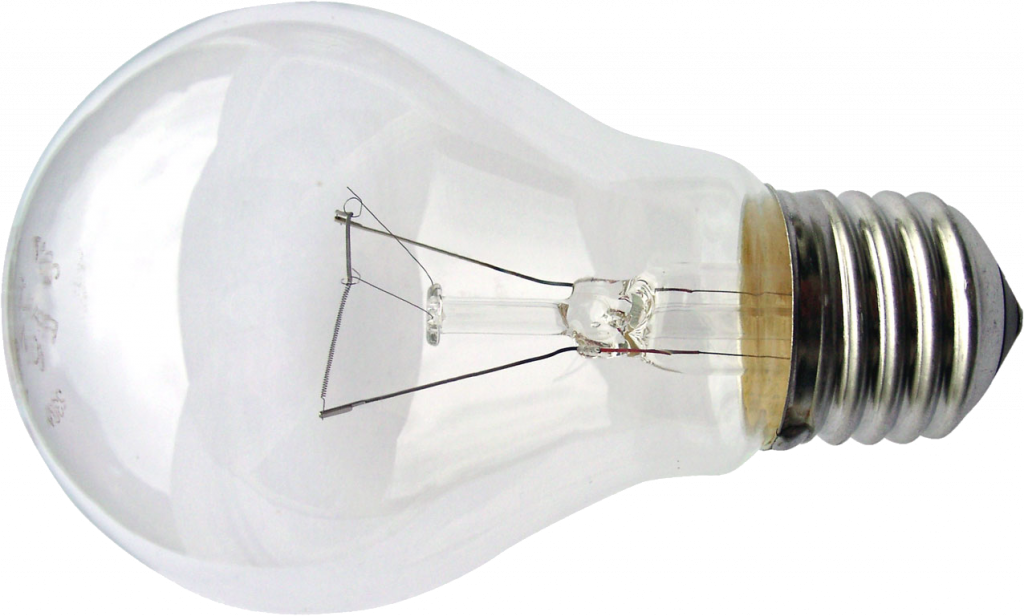
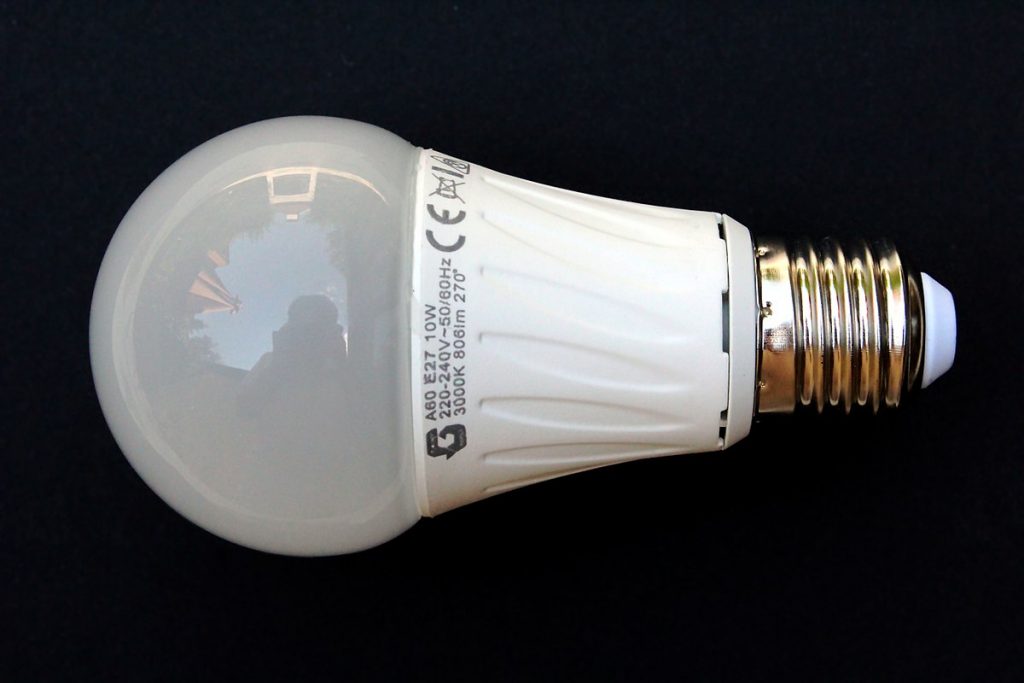
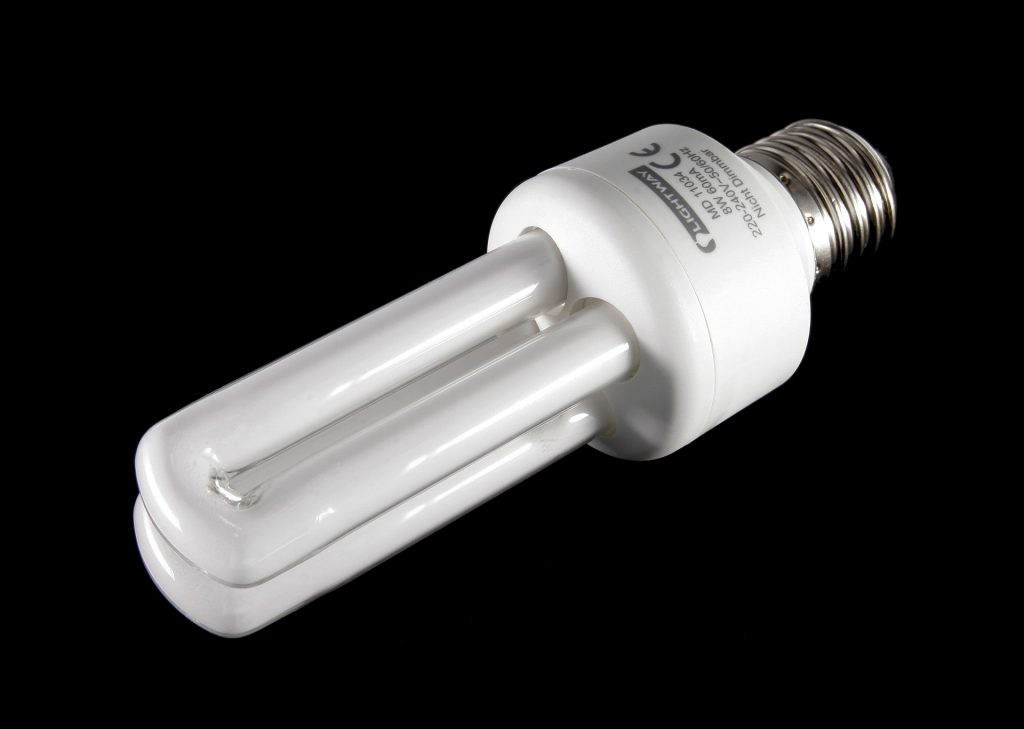
Traditional light bulbs, also known as tungsten filament, incandescent, or GLS (General Lighting Service) bulbs, were invented over a century ago and are extremely inefficient. They work by passing electricity through a thin wire filament, heating it until it glows. However, only about 5% of the electricity used is converted into light, with the rest wasted as heat.
Halogen bulbs use a similar filament-based technology but operate at a higher temperature, making them slightly more efficient than incandescent bulbs. They are commonly found in spotlight fittings and often used in high quantities in a single room.
LEDs (Light Emitting Diodes) work differently. Instead of using a filament, they pass electricity through a semiconductor, which emits light. Domestic LED bulbs contain multiple small diodes to produce a bright enough light. Because they generate very little heat and require much less energy, LEDs are far more efficient than traditional bulbs and are now available as replacements for nearly all light fittings.
CFLs (Compact Fluorescent Lamps) use a different approach. These bulbs contain gas inside a glass tube that glows when charged with electricity. They are much more efficient than traditional bulbs and last significantly longer, but they are mainly suited to replacing standard light fittings rather than spotlights.
Benefits of switching to LED lighting
Energy Efficiency: LEDs use up to 90% less energy than traditional incandescent bulbs, making them one of the most energy-efficient lighting options available.?
Cost Savings: Replacing a single halogen light bulb with an LED of the same brightness can save up to £2 per year. By replacing all bulbs in your home with LED alternatives, you could save about £40 a year on your electricity bills.?
Longevity: LED bulbs have a significantly longer lifespan compared to traditional bulbs, reducing the frequency and cost of replacements.?
Environmental Impact: Lower energy consumption translates to reduced demand on power plants, leading to decreased greenhouse gas emissions.
What to consider when upgrading to LED lighting
- Initial Investment: While LED bulbs may have a higher upfront cost than traditional bulbs, their long-term savings in energy costs and reduced replacement frequency make them a cost-effective choice over time.?
- Compatibility: Ensure that the LED bulbs you choose are compatible with your existing fixtures and dimmer switches. Some LEDs may require specific fittings or compatible dimmers to function correctly.?
- Light Quality: LEDs are available in various colour temperatures, from warm to cool white. Selecting the appropriate colour temperature can influence the ambiance of your space.
In the news
The UK has been phasing out inefficient lighting for years, with regulations banning the sale of most halogen bulbs in 2021 and fluorescent tubes set to follow in 2023. These changes are part of a broader push to cut energy waste and carbon emissions, encouraging homeowners to switch to LEDs. The government estimates that this transition could save UK households around £75 a year on energy bills while significantly reducing the country’s overall electricity demand.
Embracing LED technology is a straightforward yet impactful step towards a more energy-efficient and environmentally friendly home. By making this switch, you’re investing in long-term savings and contributing to global efforts to reduce carbon emissions.?
Costs and savings
According to the Energy Saving Trust, replacing a single halogen bulb with an LED equivalent can save you between £2 and £3 per year. While this may seem modest, replacing all the bulbs in your home with LEDs could lead to annual savings of approximately £40 on your electricity bills. ?
Additionally, many retailers have made energy-efficient lighting more accessible by offering affordable options. Therefore, transitioning to LED lighting remains a cost-effective and energy-efficient choice for UK households.
Getting started
At Cosy Homes Oxfordshire, we take a whole house approach to home improvements, ensuring every measure works with your home’s unique needs for maximum comfort, energy savings, and long-term value.
Get in touch with our team on 0330 223 2742 or by message us to book a home efficiency assessment and receive a tailored plan – helping you make the right property improvement decisions for a warmer, healthier, and more energy efficient home.
Read next…

A practical guide to solar panels for your home
Solar panels are one of the most visible ways to make your home more sustainable – but they also deliver powerful results behind the scenes. By converting sunlight into electricity, solar photovoltaic (PV) panels can help reduce your energy bills, cut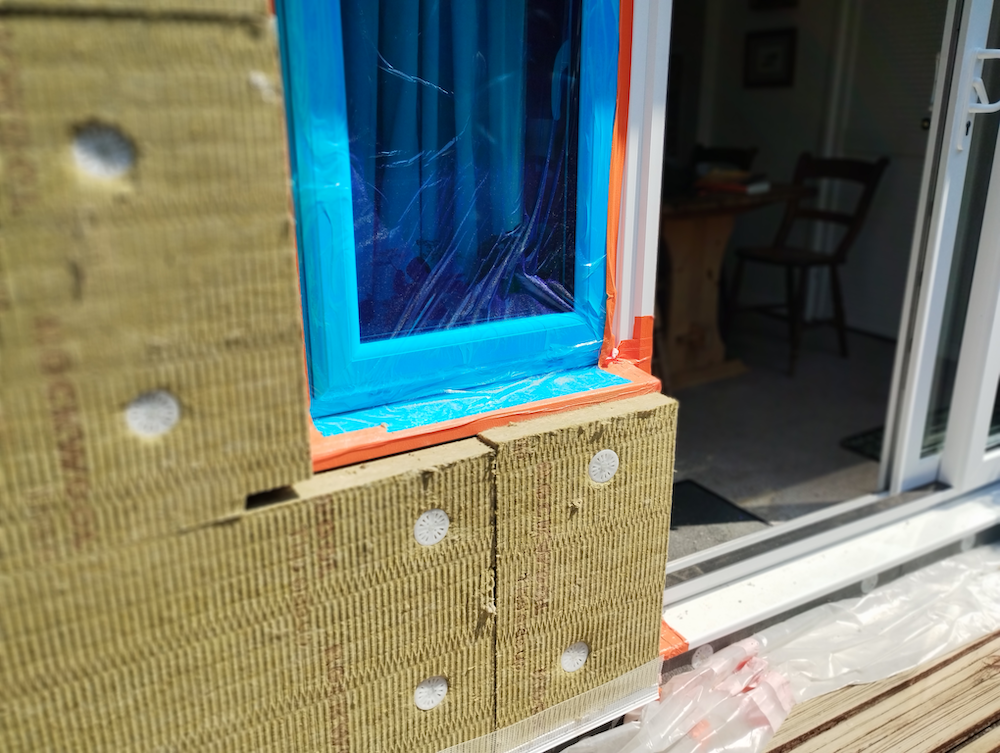
A practical guide to solid wall insulation
Solid wall insulation is a key upgrade for many older properties – helping to cut energy bills, reduce heat loss, and make homes more comfortable to live in all year
A whole house approach – more than a quick fix
A whole house approach means looking at your home as a system, not a set of parts. With expert guidance, you can plan upgrades in the right order, avoid wasted spend, and build a home that’s warmer, greener, and more comfortable for years to
